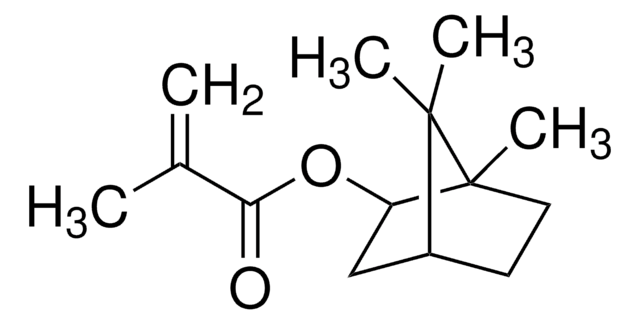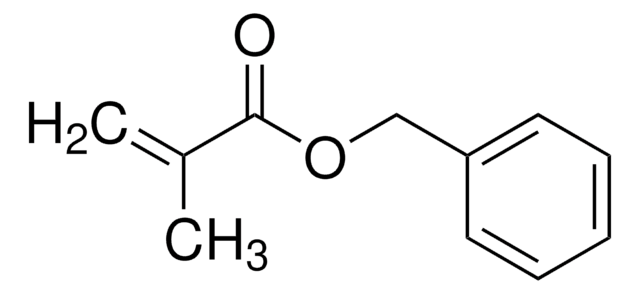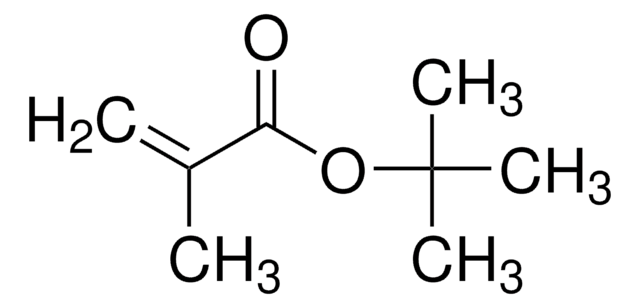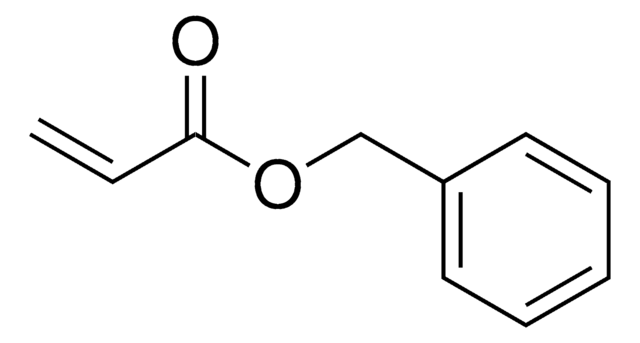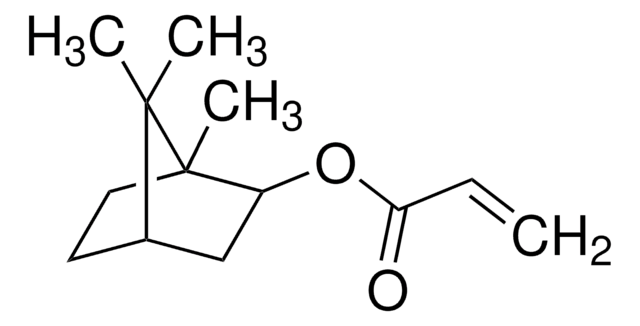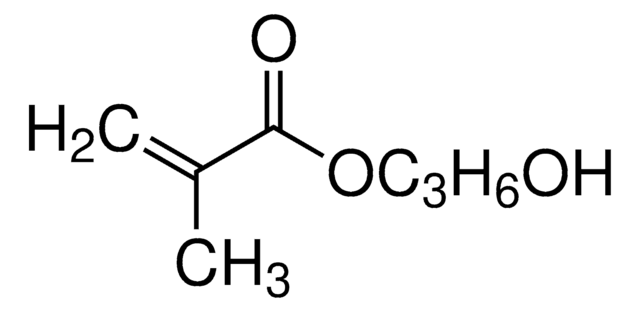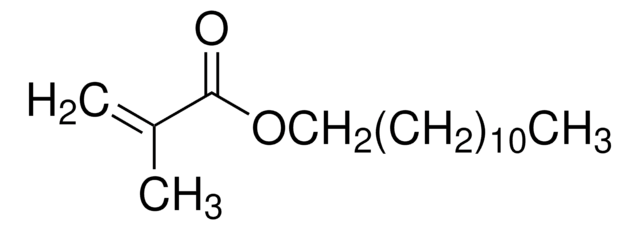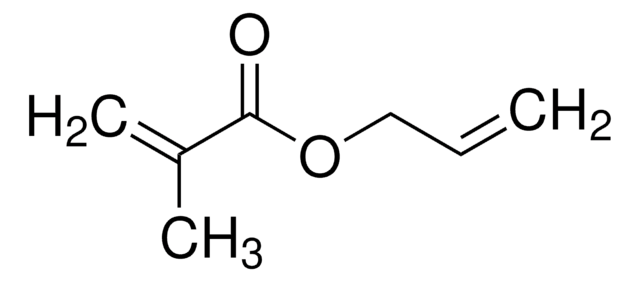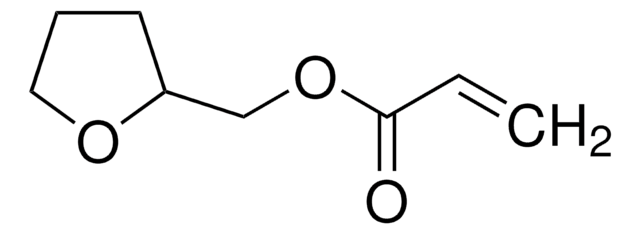408964
Cyclohexyl methacrylate
≥97%, contains ~60 ppm monomethyl ether hydroquinone as inhibitor
Sinonimo/i:
Methacrylic acid cyclohexyl ester
About This Item
Prodotti consigliati
Livello qualitativo
Saggio
≥97%
Forma fisica
liquid
contiene
~60 ppm monomethyl ether hydroquinone as inhibitor
Indice di rifrazione
n20/D 1.458 (lit.)
P. eboll.
68-70 °C/4 mmHg (lit.)
Densità
0.964 g/mL at 25 °C (lit.)
Stringa SMILE
CC(=C)C(=O)OC1CCCCC1
InChI
1S/C10H16O2/c1-8(2)10(11)12-9-6-4-3-5-7-9/h9H,1,3-7H2,2H3
OIWOHHBRDFKZNC-UHFFFAOYSA-N
Cerchi prodotti simili? Visita Guida al confronto tra prodotti
Categorie correlate
Descrizione generale
Applicazioni
- As a monomer to prepare poly(cyclohexyl methacrylate) (PCHMA) thin films for high-performance luminescent solar concentrators(LSCs). These LSCs can be used to fabricate high-quantum yield photovoltaic solar cells.
- As a comonomer to prepare photo-patternable quantum dot-acrylate resins for fabricating light-emitting diodes with high color transparency.
- As a monomer to synthesizesuperhydrophobic silica nanoparticle surfaces for various applications such as anti-corrosionsurfaces, drag reduction, and energy conservation.
Avvertenze
Warning
Indicazioni di pericolo
Consigli di prudenza
Classi di pericolo
Eye Irrit. 2 - Skin Irrit. 2 - Skin Sens. 1 - STOT SE 3
Organi bersaglio
Respiratory system
Codice della classe di stoccaggio
10 - Combustible liquids
Classe di pericolosità dell'acqua (WGK)
WGK 1
Punto d’infiammabilità (°F)
181.4 °F
Punto d’infiammabilità (°C)
83 °C
Dispositivi di protezione individuale
Eyeshields, Gloves, type ABEK (EN14387) respirator filter
Scegli una delle versioni più recenti:
Possiedi già questo prodotto?
I documenti relativi ai prodotti acquistati recentemente sono disponibili nell’Archivio dei documenti.
I clienti hanno visto anche
Il team dei nostri ricercatori vanta grande esperienza in tutte le aree della ricerca quali Life Science, scienza dei materiali, sintesi chimica, cromatografia, discipline analitiche, ecc..
Contatta l'Assistenza Tecnica.